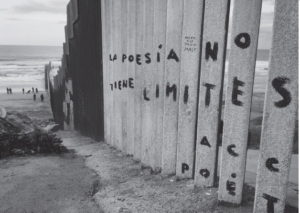Artículos de la Constitución de la República Bolivariana de Venezuela en cuestión:
Artículo 333: Esta Constitución no perderá su vigencia si dejare de observarse por acto de fuerza o porque fuere derogada por cualquier otro medio distinto al previsto en ella. En tal eventualidad, todo ciudadano investido o ciudadana investida o no de autoridad, tendrá el deber de colaborar en el restablecimiento de su efectiva vigencia.
Artículo 350: El pueblo de Venezuela, fiel a su tradición republicana, a su lucha por la independencia, la paz y la libertad, desconocerá cualquier régimen, legislación o autoridad que contraríe los valores, principios y garantías democráticos o menoscabe los derechos humanos.

Imagen: http://www.2001.com.ve/image_articulos/62e7fdb5809ba89a53fb64d3a153c96b.jpg
Por José Ignacio Hernández G. | 21 de junio, 2017
El 20 de junio de 2017 la Mesa de la Unidad Democrática anunció, a través del Presidente de la Asamblea Nacional, la aplicación de los artículos 333 y 350 de la Constitución, en el marco de las protestas iniciadas desde marzo de 2017, con ocasión al golpe de Estado permanente perpetrado en contra de la Constitución, y que luego avanzó a través de la fraudulenta e ilegítima convocatoria de la asamblea nacional constituyente.
Muchos se preguntan cuáles son las consecuencias prácticas de este anuncio. O en otras palabras: ¿cómo se aplican estos artículos de la Constitución?
1.- Entendiendo el artículo 333 de la Constitución
El artículo 333 indica que la Constitución, como es la “norma jurídica suprema”, no puede ser desconocida o derogada de manera indebida. Si ello sucediere, ese artículo ordena a ciudadanos y funcionarios a“colaborar en el restablecimiento de su efectiva vigencia”.
Por lo tanto, para que esa norma pueda ser aplicada, es necesario que la Constitución haya sido desconocida, lo que sucede en casos de golpe de Estado, o lo que es igual, ruptura del orden constitucional o del hilo constitucional.
Precisamente, desde el 2016 la Asamblea Nacional ha declarado que en Venezuela hay un golpe de Estado, con ocasión a las decisiones de la Sala Constitucional que invalidaron sus competencias, y luego, con ocasión a la suspensión del referendo revocatorio. En 2017 esa conclusión se reiteró frente a las sentencias 155 y 156, y posteriormente ante la ilegítima convocatoria de la asamblea nacional constituyente. La Fiscal General de la República también ha afirmado conclusiones similares.
2.- Entendiendo el artículo 350 de la Constitución
El artículo 350 de la Constitución reconoce un derecho propio de nuestra tradición republicana, muy estudiado por Juan Germán Roscio: el derecho a desobedecer todo Gobierno que vulnere la Constitución.
Mientras que la monarquía absoluta se basó en la obediencia ciega, la República iniciada en 1810 se basó en la obediencia racional: el ciudadano debe obediencia al Gobierno solo si éste actúa dentro de la Constitución. Pero si el Gobierno actúa fuera de sus facultades, invadiendo la libertad, entonces, el deber de obediencia cesa.
En 2003, la Sala Constitucional interpretó que el artículo 350 permitía invocar la desobediencia cumpliendo con tres esas condiciones: (i) debe existir un Gobierno, Ley o sentencia que usurpa la voluntad popular y actúa al margen de la Constitución; (ii) deben haberse intentado todas las acciones judiciales previstas en la Constitución, pese a lo cual (iii) se mantiene el desconocimiento a la Constitución. La sentencia, sin embargo, trató de limitar el alcance de ese derecho, lo que es una tarea inútil: el derecho a la desobediencia existe, incluso, frente a sentencias que arbitrariamente pretendan limitarlo.
3.- ¿Cómo se aplican en la práctica los artículos 333 y 350?
Los artículos 333 y 350 son dos caras de una misma moneda. Tal y como Roscio lo explicó hace doscientos años, frente a Gobiernos despóticos, el ciudadano tiene dos derechos: (i) un derecho pasivo que consiste en no obedecer o colaborar con ese Gobierno (artículo 350) y (ii)un derecho activo que consiste en realizar todas las acciones para restablecer la vigencia de la Constitución (artículo 333). Ambas facetas parten del desconocimiento jurídico del Gobierno que actúa al margen de la Constitución, y que por ende, no debe ser obedecido.
El derecho a la desobediencia, como derecho pasivo, tiene un contenido específico: no obedecer órdenes o mandatos derivados de Gobiernos que actúan al margen de la Constitución. Ese derecho debe ser ejercido por los ciudadanos por medio de mecanismos de no-cooperación, mucho de los cuales ya se han venido cumpliendo en el marco de las recientes protestas. Por ejemplo, cuando la UCAB y otras universidades decidieron no colaborar con el CNE en el fraudulento proceso constituyente, estaban actuando al amparo de este artículo, aun cuando no haya sido formalmente invocado.
Para los funcionarios, este derecho es ampliado en el artículo 29 constitucional, el cual reconoce el derecho a no obedecer órdenes violatorias de derechos humanos. Aquí, la desobediencia tiene un grado de eficacia mayor, pues en definitiva, las ordenes contrarias a la Constitución (desde la represión a manifestantes hasta las elecciones de la “constituyente”) requieren de actuaciones de funcionarios, quienes legítimamente pueden negarse a colaborar con esos procesos, impidiendo de esa manera la vulneración de los derechos humanos.
Por su parte, el contenido del artículo 333 es más amplio. En realidad, esa norma solamente establece una obligación de resultado: si la Constitución es desconocida, su eficacia debe ser restablecida. Pero la Constitución no explica cómo puede lograrse ese restablecimiento, lo que es lógico, pues esa norma rige frente a situaciones de hecho excepcionales en las cuales las normas constitucionales han perdido eficacia.
Por ello, para restablecer la vigencia de la Constitución, los ciudadanos y los funcionarios pueden adoptar cualquier acción, bajo dos límites: (i) la acción debe ser necesaria y pertinente para restablecer, en la práctica, la vigencia de la Constitución, y (ii) no pueden vulnerarse principios superiores como la libertad, el pluralismo y la democracia, así como los derechos humanos. Por ello, el artículo 333 no es un cheque en blanco.
4.- ¿Y qué puede hacer la Asamblea Nacional?
La Asamblea Nacional cumple un rol importante en la aplicación del artículo 333 constitucional, pues en su condición de representante del pueblo, tiene legitimidad democrática suficiente para emprender cualquier acción necesaria para restablecer la vigencia de la Constitución, dentro de los límites ya señalados.
Ese rol debe ser cumplido tomando en cuenta dos particularidades.
Lo primero que debe considerarse es que el artículo 333 se aplica para incidir en las condiciones materiales que impiden que la Constitución tenga vigencia plena. No basta, por ello, con decisiones jurídicas dictadas por la Asamblea: es necesario que en la práctica esas decisiones sean cumplidas.
Lo segundo que debe tomarse en cuenta es que la derogatoria de hecho de la Constitución de 1999 no responde a una única causa, sino a causas complejas. Por lo tanto, para restablecer la vigencia de la Constitución deben adoptarse decisiones complejas, planificadas y articuladas para lograr el objetivo querido por el artículo 333.
Como se observa, la aplicación del artículo 333 por la Asamblea no requiere simplemente de un acto que se cumpla de manera instantánea, sino más bien de un proceso a través del cual la actual situación de hecho actual pase a ser una situación de Derecho regida efectivamente por la Constitución.
Ese proceso, en suma, es un proceso de transición hacia la democracia, o lo que es igual, un proceso de transición democrática, al cual recientemente se refirió Luis Ugalde. Fue en este sentido que la Asamblea, en mayo pasado, decidió crear la Comisión de Garantías para la Transición.
De esa manera, la Asamblea Nacional, como legítimo representante del pueblo, es a quien le corresponde planificar y coordinar el proceso de restablecimiento efectivo de la Constitución. Para ello, ciertamente, es necesario continuar con los procedimientos de designación de los magistrados del Tribunal y de los rectores del CNE, entre otras accionesorientadasa la transición hacia una democracia constitucional estable.
Pero nuevamente debo advertir que esas decisiones de la Asamblea, en sí mismas, serían insuficientes, pues se requiere que ademássean cumplidas en la práctica. Para garantizar esa aplicación práctica no solo se precisa del apoyo de la sociedad civil (a través de métodos de protesta y no-cooperación), sino también de los funcionarios, quienes de acuerdo con los artículos 29 y 333 de la Constitución, deben colaborar en el restablecimiento efectivo de la Constitución, como ya ha hecho la Fiscal.
Precisamente, como anunció la Asamblea al crear la citada Comisión de Garantías para la Transición, es necesario establecer incentivos para que los funcionarios desconozcan los actos que configuran el golpe de Estado y colaboren en el restablecimiento de la Constitución.
Sobre estas ideas estaré profundizando en nuevos artículos.
José Ignacio Hernández G. José Ignacio Hernández es abogado venezolano, Doctor en Derecho de la Universidad Complutense de Madrid y Profesor de la UCV y UCAB. Puedes seguirlo en Twitter en @ignandez
En: prodavinci.com







